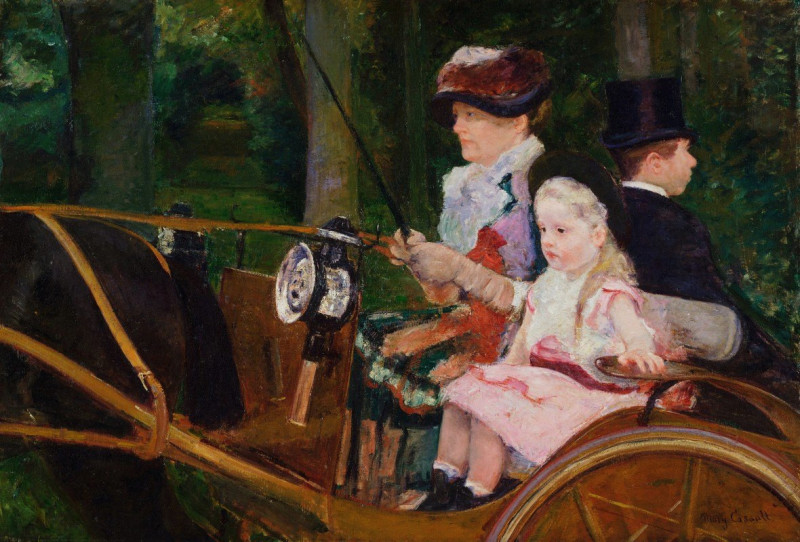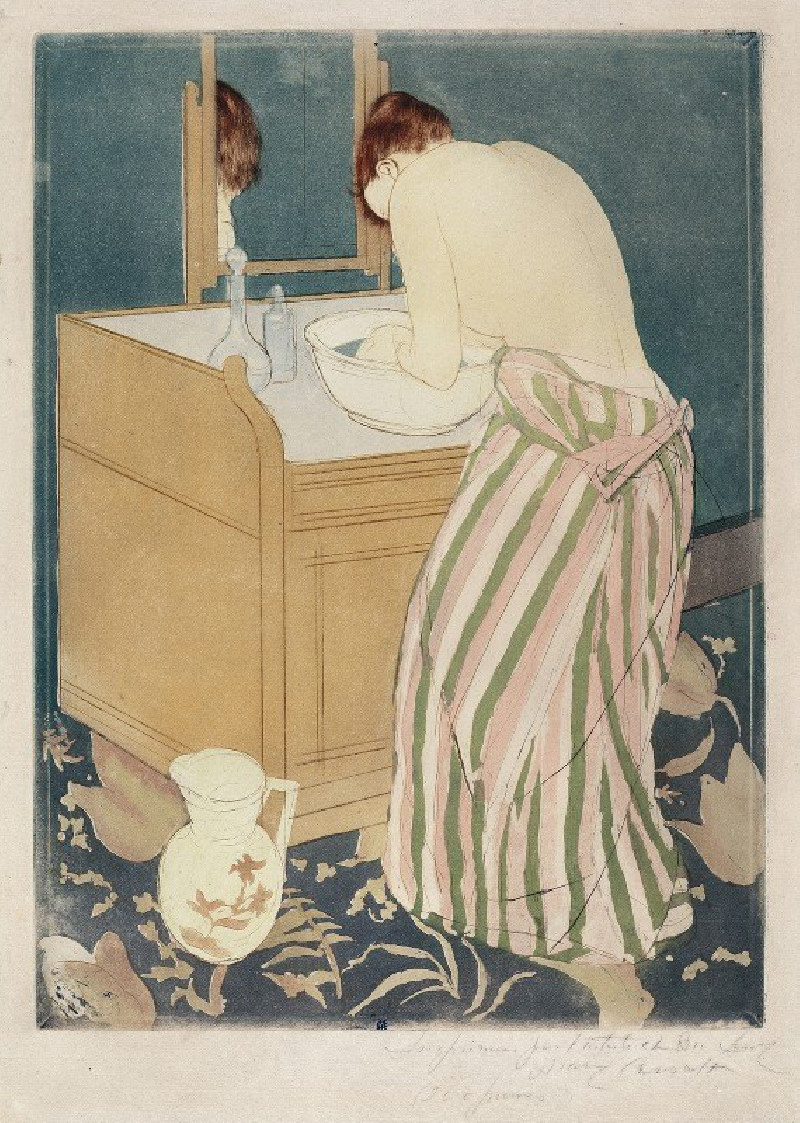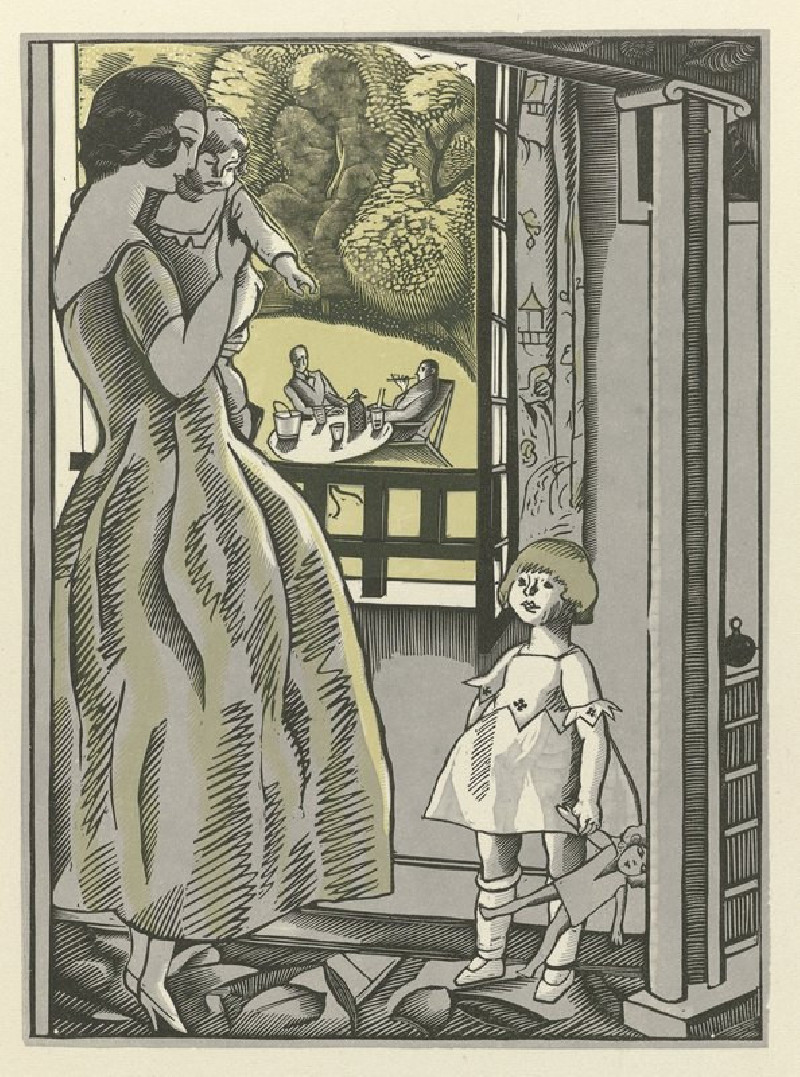In The Garden (1903)
Technique: Giclée quality print
Recommended by our customers
More about this artwork
Mary Cassatt's enchanting painting, "In The Garden" (1903), captures a tender moment shared between a mother and her young daughter, set against the serene backdrop of a lush garden. The painting showcases Cassatt's masterful use of light and color, as well as her profound ability to depict the nuances of human relationships.In this artwork, the mother, seated and turned slightly away from the viewer, engages her child with a gentle touch to the chest. The young girl, adorned in a pink frock with ruffled trim and a strikingly wide-brimmed hat adorned with a black ribbon, gazes directly at the viewer with an expression of innocent curiosity. Her cheeks are tinted with a blush that complements the natural setting around them.The surrounding garden, painted with broad strokes of vibrant greens and scattered touches of floral color, suggests an environment of safe and nurturing beauty. Cassatt's technique beautifully conveys both the texture of the clothes and the softness of the skin, while the brushstrokes in the background merge seamlessly to create a dynamic yet peaceful garden scene."In The Garden" is more than a visual representation; it is an intimate portrayal of the bond between mother and child, reflecting both the protective care of the mother and the trusting innocence of the child.
Delivery
Returns
Mary Stevenson Cassatt was an American painter and printmaker. She was born in Allegheny City, Pennsylvania (now part of Pittsburgh’s North Side), but lived much of her adult life in France where she befriended Edgar Degas and exhibited with the Impressionists. Cassatt often created images of the social and private lives of women, with particular emphasis on the intimate bonds between mothers and children.
She was described by Gustave Geffroy as one of "les trois grandes dames" (the three great ladies) of Impressionism alongside Marie Bracquemond and Berthe Morisot.In 1879, Diego Martelli compared her to Degas, as they both sought to depict movement, light, and design in the most modern sense.



































![Interior of the mosque of the Metwalys [Metwalis]. (1846-1849) reproduction of painting by David Roberts. ALL GICLEE PRINTS](https://reprodukcijos.lt/39169-large_default/reproduction-of-interior-of-the-mosque-of-the-metwalys-metwalis-1846-1849.jpg)










